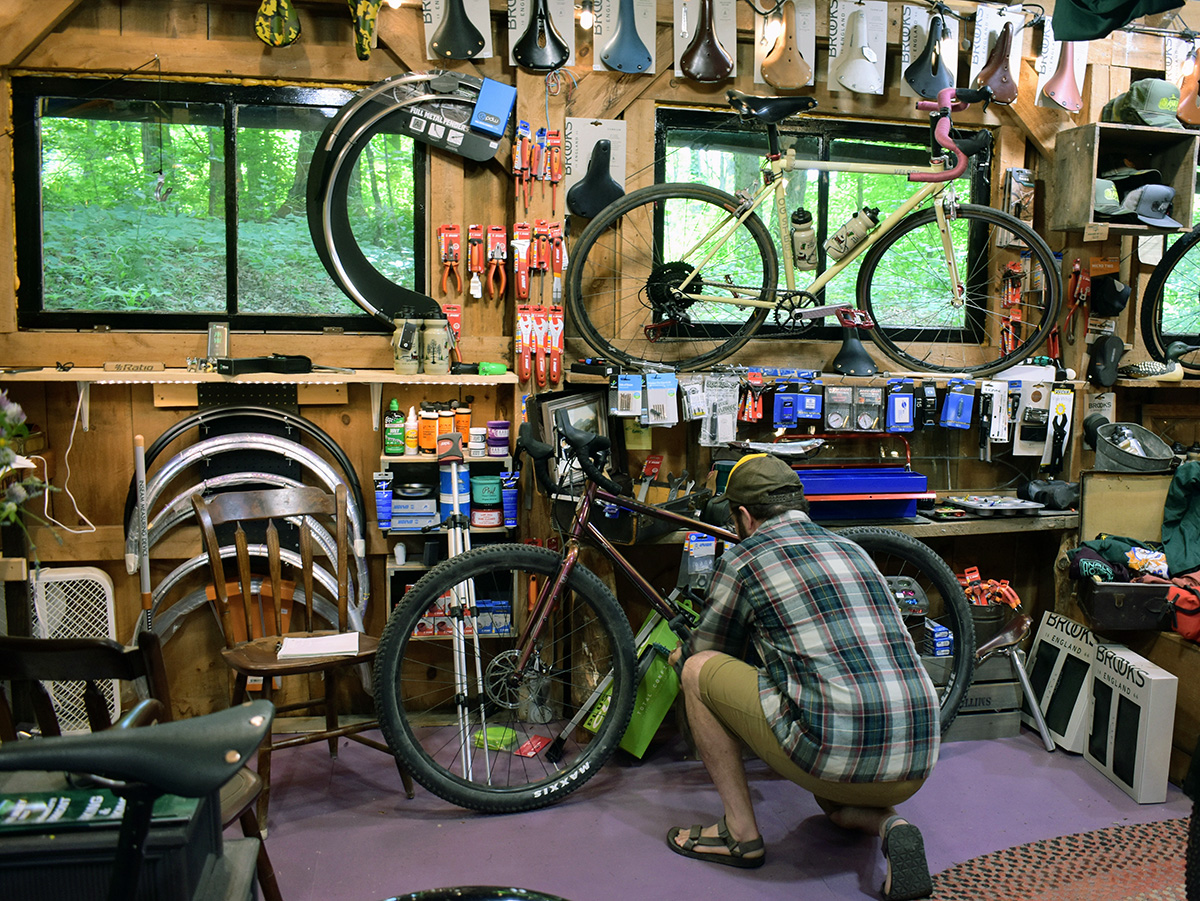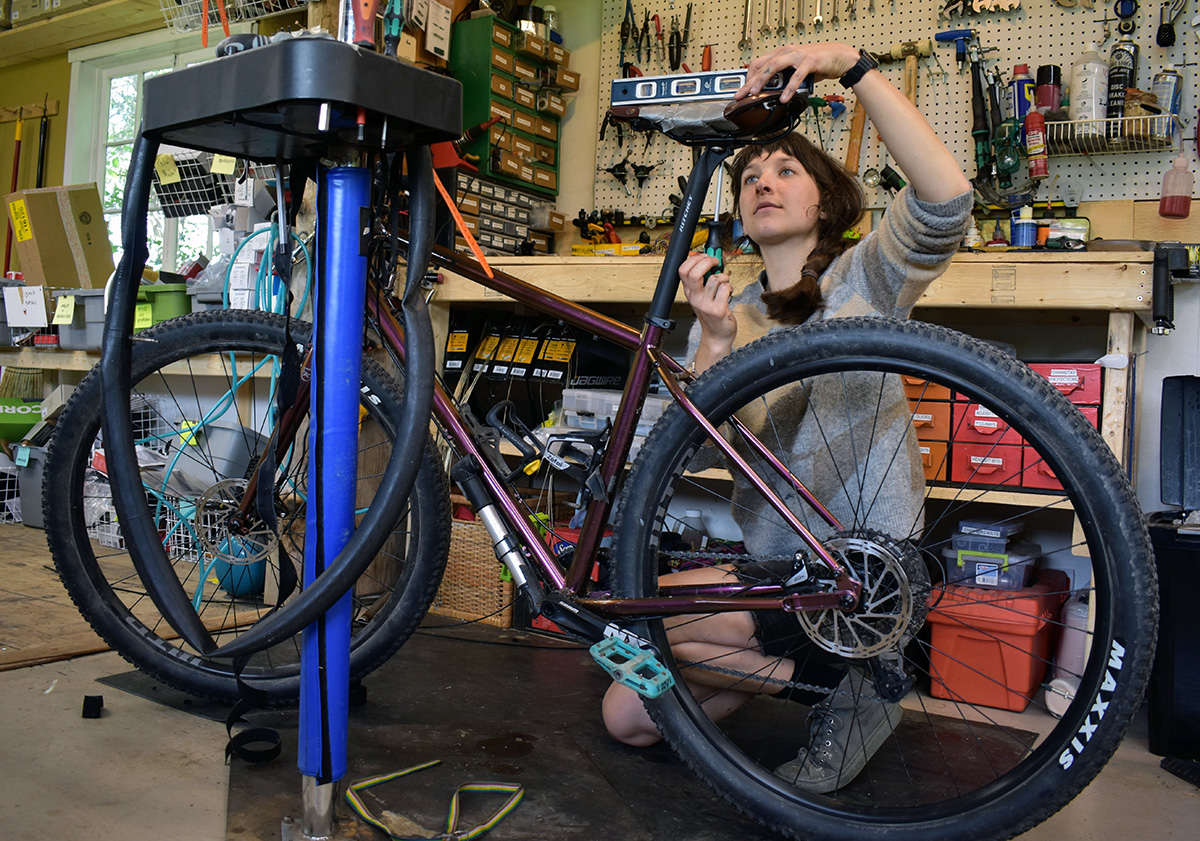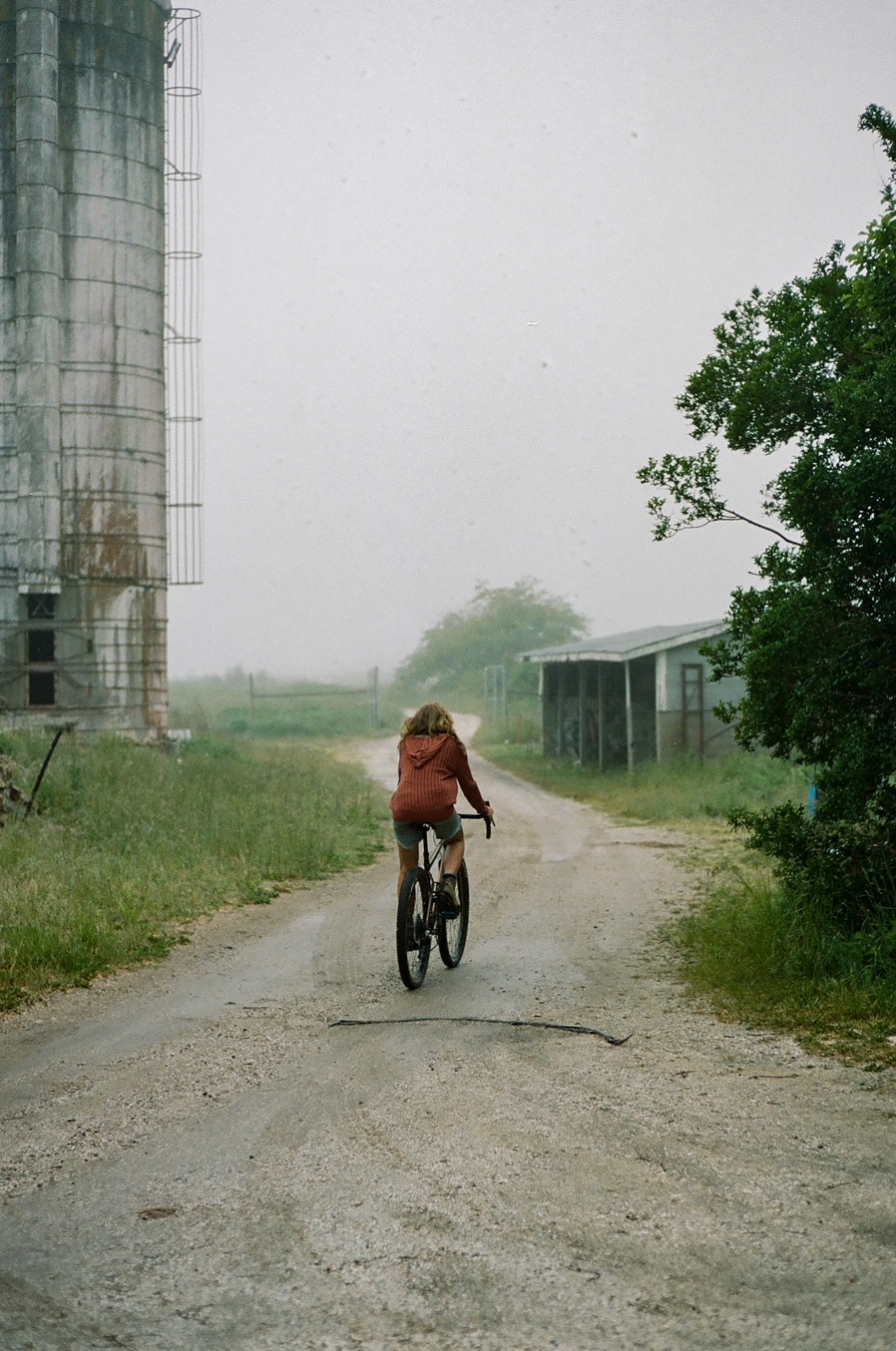Analog Cycles
I’m an avid bike commuter. I ride to the grocery store, to work, to friends’ houses, to the library. These miles always feel useful — they set me in motion and take me places. Over the course of a year, I save several tanks of gas and get the giddy pleasure of using my legs.
As I pedal, I let my thoughts slip and slide, and I often find myself musing on the nature of reality. Humans have created so many clever things: airplanes, socks, toasters, toothpicks, bicycles. The bike I’m riding is made from steel that was mined from the innards of the earth. With every pedal stroke, I push pieces of plastic made from crude oil, a liquid formed from the bodies of multi-billion-year-old organisms. When you consider where all this stuff comes from, it breaks open the brain.
Bikes have long had a place at the heart of climate justice and social change. They replace cars for journeys long and short, increase mobility for people around the world, and are relatively easy to maintain and repair. Bikes are arguably the most ecologically sustainable mode of transportation that humans have ever created.
And bikes, like all human-made things, are still objects of temporary consumption. They are still made of stuff that can eventually become trash. And like most industries, the bike industry has long adapted to the pressures of consumerism by making bike parts that are cheap and disposable — easy to buy and easy to break.
Candice and James, the owners of a Vermont bike shop called Analog Cycles, outline this trend on their website:
“It’s easy to come across as a Luddite when you say things like: cheap handsaws used to be works of art, and now they are garbage … There is no reason, except profits, why handsaws today have plastic handles rather than ones made of scrolled wood. And there is no reason to make bikes out of plastic, or make components that have a short shelf life and are non-repairable.”

I had learned about Analog Cycles from my friend James Joiner, a photographer who still uses an analog camera. (A camera that shoots with film — remember those?) When I read through the Analog Cycles website, I realized that Candice and James were people who also mused about the nature of reality while riding their bicycles. And they’d taken those musings a few steps further: they’d created a whole bike shop based on the idea that bikes could become more ecologically sustainable instead of less so. I knew I had to pay them a visit.
One weekend that summer, I drove up to Vermont for a family vacation and took a small detour to Analog Cycles. I knew I was in the right place because the building didn’t look like any bike shop I’d ever been to. The roof was framed with a triangle of thick logs and had the rustic charm of a backcountry cabin. I rolled my bike to the open door, and James greeted me with a smile. He had a short beard and glasses and looked like someone who enjoyed tinkering. I’d heard he was a genius at bike fits, so I’d come to get my Kona Sutra ULTD correctly fit to the wonky shape of my wayward body.
I rolled my bike in and James set it on a stand. The inside of the shop was covered in neatly placed tools and locally made bike products. It was very cozy. James and I chatted for a minute and then he glanced down at my bike. I thought he was going to have a stroke.
“What’s on your saddle?” he asked in a strained voice.
“Oh that? It’s totally fine,” I said quickly. “I like it that way.”
We both stared down at my saddle, covered in strips of filthy gray duct tape.
“See, it’s this leather saddle that I totally love,” I offered. “But the tensioner stopped working so I fixed it with duct tape.” I held my fingers up in emphatic air quotes at the phrase “fixed it.”
James took a deep breath. I was glad he was still breathing.
“That should never happen,” he said, shaking his head and reaching for a leather saddle hanging on the wall. “A saddle should last a lifetime. If it doesn’t, it wasn’t designed right.” He showed me the edging on the saddle in his hand. “See how that will never come apart, like yours is coming apart? That’s how it should be.”
I could see his point. If we can send a human to the moon, we can also make bike saddles that don’t fall apart when you sit on them. As long as a bike part lasts, it’s not trash. That’s good design, good value, and good use of resources.
I looked at the new saddle in James’ hand. It was beautiful and would probably last a lifetime. I also felt no reason to replace the saddle I already had as long as it still worked for me. And this is where our philosophies met in the middle. James was right: bike parts should be designed to last, and if they’re not, something has gone wrong. And if you’re not starting out with those high-quality bike parts, then mending can be a viable option. Either way, you’re using the thing to the very end of its lifespan, and that is the point.
I opted to keep my duct-taped saddle, which I still love. When it finally dies an honorable death, I will replace it with one designed to last.
Once James recovered from the horror of my duct tape, we moved on to the bike fit. He measured my wonky limbs, watched me ride around, and scribbled things in a notebook. At one point, he had to measure the inside of my leg so I pulled down my pants. James and another male customer yelled and covered their eyes.
“Guys, I have shorts on underneath!” I laughed, standing there with my pants around my ankles. I realized it was the first time I’d ever made dudes uncomfortable in a bike shop. Only at Analog Cycles!

James and I agreed on a few bike part changes, and he sent me over to his partner Candice to make the adjustments. Candice quickly whipped my bike into shape, while I did my best to distract her with questions about bike parts, sustainability, and gender roles. Candice advocated for steel bike frames instead of carbon, citing steel’s longer lifespan and fewer environmental impacts. She also talked about the need for more women’s riding clubs. She recommends that women reach out for help and learn basic mechanical skills. “None of it is beyond your reach,” she said, adjusting my handlebars. “It can all be simplified.”
Eventually, my bike was ready and Candice and James waved goodbye. As I left the shop, I thought about what I’d learned. The best bike parts are ones that last. Ultimately, this is something the bike industry is accountable for. In “Creating a Better Bike Industry,” from the Dec. 2021/Jan. 2022 issue of Adventure Cyclist, writer Amos Horn describes how some companies are already becoming more ecologically sustainable. They’re creating their own sustainability initiatives and developing new methods to “downcycle” used parts and production waste. However, it’s still a work in progress that will take time, effort, and continued adaptation.

In the meantime, consumers can ask for higher quality parts and support bike shops like Analog Cycles that facilitate access to those parts. And if you’re not starting out with reliable bike parts, then you can often continue to use, mend, and repair the parts you have.
Global supply chains are incredibly complicated. Every “thing” comes from many different places at once. It’s a messy web to untangle, and when you look at it directly, it’s easy to think, “Okay, this is impossible.” But many things that now exist were once impossible visions. Little bits of forward motion from many different angles create compounding solutions, and this is something we can all be a part of.

